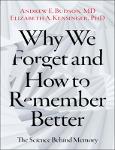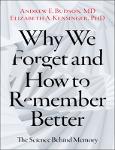Item Infomation
Full metadata record
| DC Field | Value | Language |
|---|---|---|
| dc.contributor | Elizabeth A. Kensinger | - |
| dc.contributor.author | Andrew E. Budson | - |
| dc.date.accessioned | 2024-03-06T03:01:38Z | - |
| dc.date.available | 2024-03-06T03:01:38Z | - |
| dc.date.issued | 2023 | - |
| dc.identifier.uri | http://thuvienso.thanglong.edu.vn//handle/TLU/9396 | - |
| dc.description.abstract | "One of us (Elizabeth) had the opportunity to conduct research with a gentleman named Henry Molaison (better known by his initials, H.M.1), who had the interior portion of his left and right temporal lobes (the part of your brain next to your temples) removed in 1953 because of epileptic seizures that were difficult to control. From a technical standpoint, the surgical procedures went fine. But, as he recovered, the doctors and researchers soon noticed something very troubling: he was unable to form any new memories. He could read, and talk, and if you were having a brief conversation with him, you would probably not notice anything amiss. But family members would visit and, although he knew who they were, he would have no memory of them coming. New doctors would introduce themselves and the next day (or even the next hour) he did not recall that he had met them. It was then that the doctors understood that, somehow, the removal of those parts of the temporal lobe caused him to become completely amnestic"-- | vi |
| dc.language.iso | en | vi |
| dc.publisher | Oxford University Press | vi |
| dc.subject | Memory | Brain | Ký ức | Não | vi |
| dc.title | Why we forget and how to remember better : the science behind memory | vi |
| dc.type | Sách/Book | vi |
| Appears in Collections | Công tác xã hội - Y tế | |
Files in This Item:




